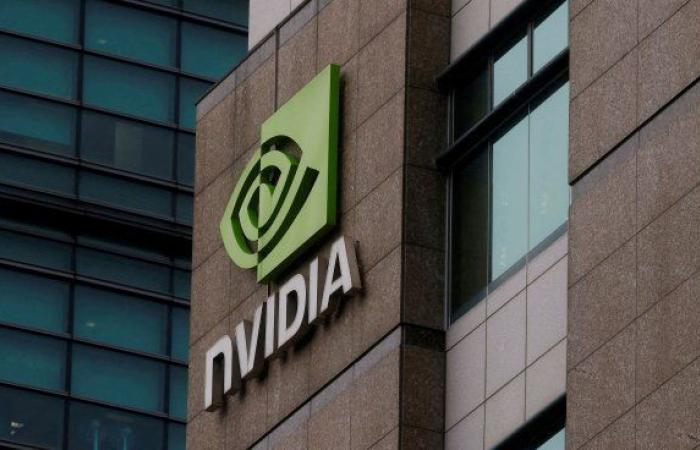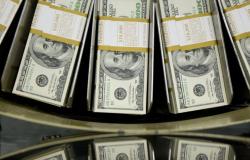
The daring of the bulls that go to the front cannot be denied. Nor the thinning of the herd. The bull market is valid, but it has lost thickness. In its tangle of records, Wall Street does not need a rate cut.
No news at the front. Not even in the rear. Nvidia breaks records and drags down the main Wall Street indices with it. The S&P 500, on Wednesday, briefly crossed the 5,500 point mark for the first time. Riding on the bonanza of Nvidia and artificial intelligence, accumulates 31 records so far in 2024, after a two-year drought. Wall Street advances with Nvidia’s push, but when the paper sneezes, he immediately catches a cold. The dependence on him is notable. It was enough for the chip maker to stumble on Thursday (-3%) after breaking another high for the S&P 500 and the Nasdaq to suspend the party and join it in the sentiment. The same thing happened on Friday, with great volume, in a round that witnessed a triple expiration of options (where seven million contracts were traded on the star paper).
The content you want to access is exclusive to subscribers.
to subscribe I am already subscribed
Don’t be scared, it’s not a roller coaster. Stock volatility barely blinks an eye. The VIX index closed at 13, far from a threshold that represents danger. Nvidia climbed 155% for the year (and more than 1000% since October 2022). Two days with losses of 3% is a respite and not a serious question. Nor does the step aside of the S&P 500 (+14.5% in the year) and the Nasdaq (+17%) cancel the onslaught of the bulls. The Dow Jones Industrial, which does not include Nvidia but could after its stock split, rose 1.45% in its best weekly performance since May. The bull market is intact.
However, euphoria is not dominant. Distrust, more than fear, won these last two weeks over ambition. He momentum The rise is impeccable, but there are cracks. Wall Street smashes recordsseveral per week. However, the ratio between stocks setting new (52-week) highs and those falling to new lows decreases and tends to level out. Beyond the technology fever, participation is scarce and, in the last month, there is a clear loss of strength. The S&P 500 advanced 4.3% thanks to only a handful of its components. The price of that same basket of 500 shares did not increase, but rather decreased 1.4% if each paper is weighted equally and not by its capitalization value (which gives more weight to larger companies). You have to go back to the end of March to locate the last record of the equal-weighted index. Since then it fell 2.6%. April was hard for everyone, and in May it tried the same recovery of the conventional S&P 500, but it ran out of fuel for a month. If other papers are considered, such as shares of small companies, their path reveals a worse anemia. The Russell 2000 sank 2.5% last month. And in the year it lies 0.5% down. The daring of the bulls that go to the front cannot be denied. Nor the thinning of the herd. The bull market is in force, but it has lost thickness (which was never its strong point).
The FED’s tolerance while the decline proceeds with prolixity outside the US
The crack is striking because, as said, volatility is not news. Long rates are down nearly half a point from their recent peak in late April. And, above all, the dark clouds that arose in the first quarter off the agenda were cleared. Inflation eased in May. The FED, which showed tolerance when the data was not to its liking, verified that patience is the appropriate recipe. And at no time did he hint at the intention to tighten monetary policy. Finally, the economy is growing vigorously, despite some signs of cooling that have also been corrected. In May, job creation was energetic and so was activity. Perhaps too much for the FED’s taste, but in line with what suits companies and their profitability best. And why doesn’t it spread the stock bonanza and become more and more concentrated? That is the core of distrust. It is not new because the rally always had to climb through a gorge of complications, but it is renewed.
Lowering rates is talked about a lot in the US. The FED does not reject speakers or points of view. But there is no rush and it is not realized. On the other hand, the decline proceeds with prolixity outside the US. Switzerland, which debuted it among the G10 countries, has already triggered its second quarter-point cut. And bets are being taken on whether there will be a third in the remainder of 2024. The Bank of England, in a split vote of 7 to 2, decided to maintain its rates. And so a drop in August is embedded in prices. Norway, which made a similar resolution, seems a tougher nut to crack (at least until 2025). Australia, ditto. And Japan, the exception to the rule, should practice a rise (the second) although it has already been proven that the world cares little. Except in the exchange market, where he had to intervene to support the yen in April and May without lasting results. In its tangle of records, Wall Street does not need a rate cut. And you should believe Neel Kashkari, one of the few hawks of the FED along with Governor Michelle Bowman. We have to think that he will remain until December, after the election. But the second line and the small companies would prefer it first. Their wishes will not be met unless they are made to be heard loudly enough.





